The art of farming at The Dalston Mill
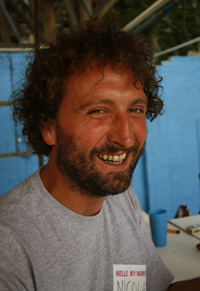
Nicolas Henninger of EXYZT architects
In 1982, artist Agnes Denes planted a wheatfield in the centre of Manhattan as a ‘confrontation’ between urban and rural designed to ‘call attention to our misplaced values’.
The artistic intervention is now being recreated in the heart of Dalston as a collaboration between Denes, the EXYZT architectural collective and the Barbican Art Gallery in conjunction with its Radical Nature exhibition.
A 20-metre long wheatfield will be grown for three weeks on the space of a disused railway line. In early July, EXYZT began work on a 16-metre high mill that will grind the wheat, together with a bread oven where the collective will work with the local community to bake different breads from the resulting flour.
EXYZT is an architectural collective with a radical edge. Rather than simply drawing designs for buildings, they also build them.
Having constructed a Lido in Southwark last summer (and having represented France in the 2008 Venice Biennale of Architecture), they undertook extensive research on windmill construction for this project.
Nicolas Henninger, one of the collective’s founding members, favoured the Dalston site due to the wide range of people who can be found in the area, for the rapidity of change the neighbourhood is experiencing, and also for the proximity of shops in which to purchase necessities such as food and screws.
The architects particularly value the participatory aspect of the ‘intervention’ and the way in which it involves people for a moment in a space undergoing transformation.
Henninger locates the Dalston Mill on the border between public and private space, as an activity in which ‘public space is appropriated by someone in order to give it back to the people’.
A programme of events will accompany the project, including:performances by Arcola Youth Theatre; urban psychoanalyst Laurence Petit gathering thoughts and opinions about Dalston; a cake decorating workshop by Jagdish Patel from Ridley Road’s Party Party; a feral trade tea service with local artist Kate Rich; pedal powered music with Magnificent Revolution and a bread-making workshop with Somerford Grove Youth Group.
There will also be a café where visitors can relax, watch the wheat grow, and eventually consume the baked goods made from it.
The Dalston Mill will be open to the public from 15 July; the entrance is through the fence immediately to the west of the Peace Mural on the northern side of Dalston Lane, near the junction with Kingsland Road.
Listen to the interview with Nicolas Henninger:
Part 1: [audio:nicolas-part-i.mp3]
Part 2: [audio:nicolas-part-ii.mp3]
Watch the EXYZT | The Dalston Mill (RSA Arts & Ecology) video.
More details about the exhibition.
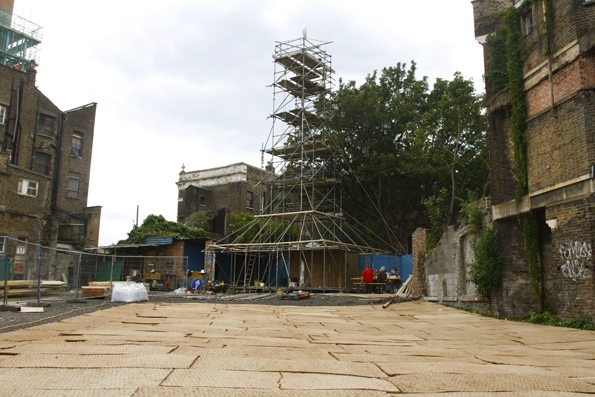
Work in progress on the Dalston Mill, 9 July 2009 Photo: © The Hackney Citizen Ltd
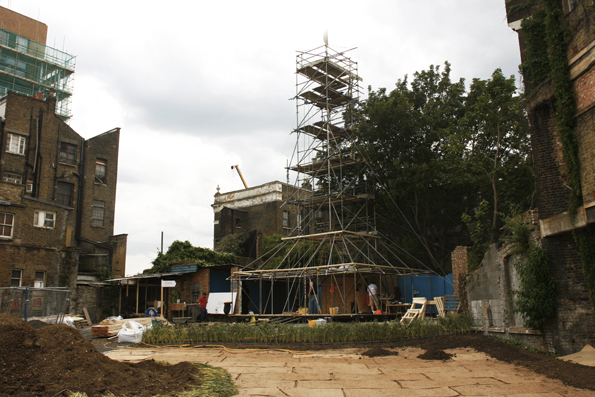
The beginning of the wheatfield planting, 10 July 2009 Photo: © The Hackney Citizen Ltd
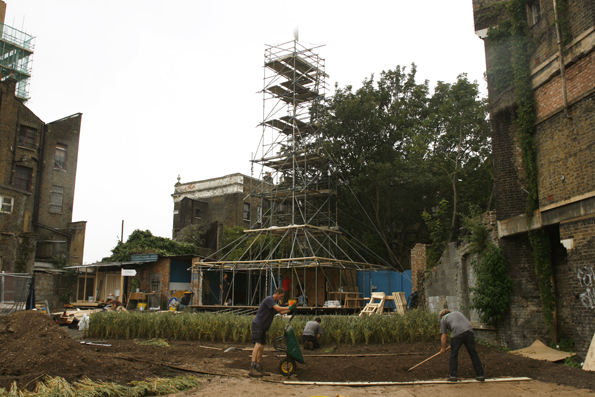
The wheat planting continues, 11 July 2009 Photo: © The Hackney Citizen Ltd
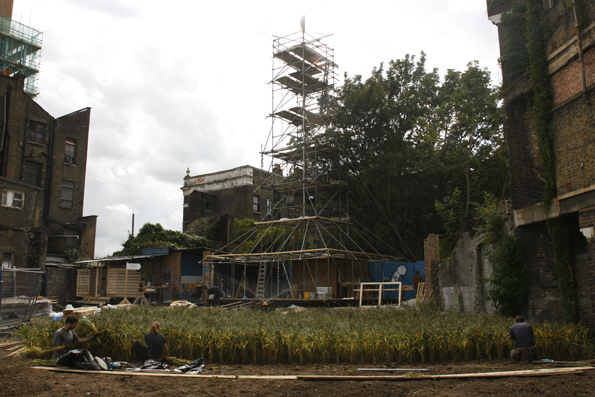
12 July Photo: © The Hackney Citizen Ltd
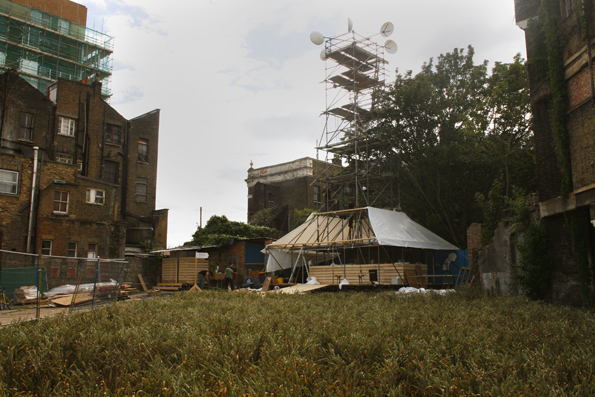
13 July Photo: © The Hackney Citizen Ltd
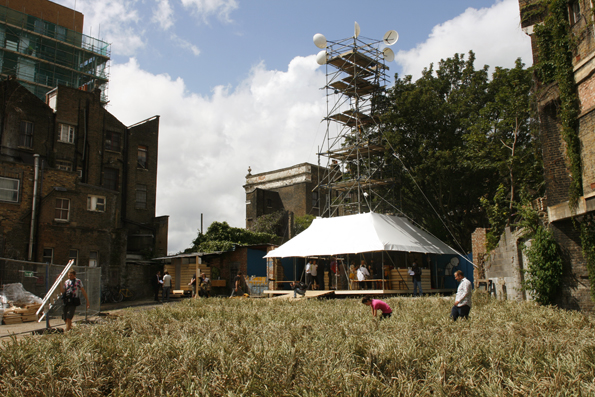
14 July Photo: © The Hackney Citizen Ltd
